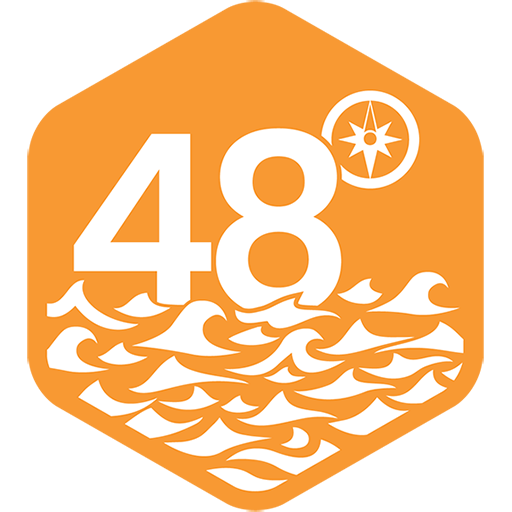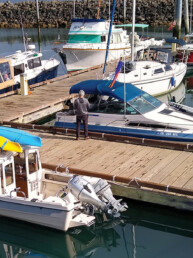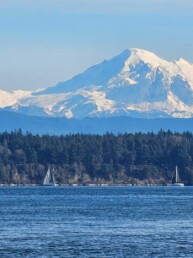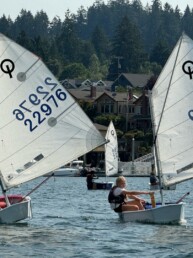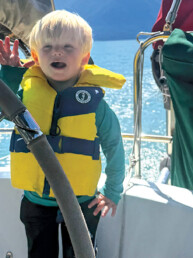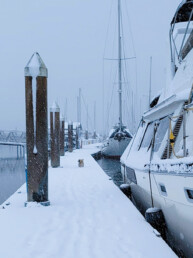There’s something about seafood and cruisers. Maybe it’s fresh sushi in Bahía Asunción, on Baja California Sur’s Pacific coast in Mexico, made by a Canadian singlehander for a US-dated Thanksgiving potluck dinner hosted by a Canadian ex-pat, Shari, at her La Bufadora Inn. Or yellowtail tacos at anchor in San Juanico aboard Grant and Noel’s Mundial, a Downeaster 38, washed down with a six-pack of Tecate as we celebrated Grant’s two-in-one-shot spearfishing prowess. Or having a half-thawed tuna steak handed up to you from a dinghy by your La Paz anchorage waltzing partner after he discovered his daughter had turned off the freezer. Or much closer to home, the invitation to come aboard for a summer sunset Dungeness crab-cracking party with new friends in Garrison Bay, Spencer Spit, Winter Cove, or one of the thousand other idyllic Salish Sea anchorages.
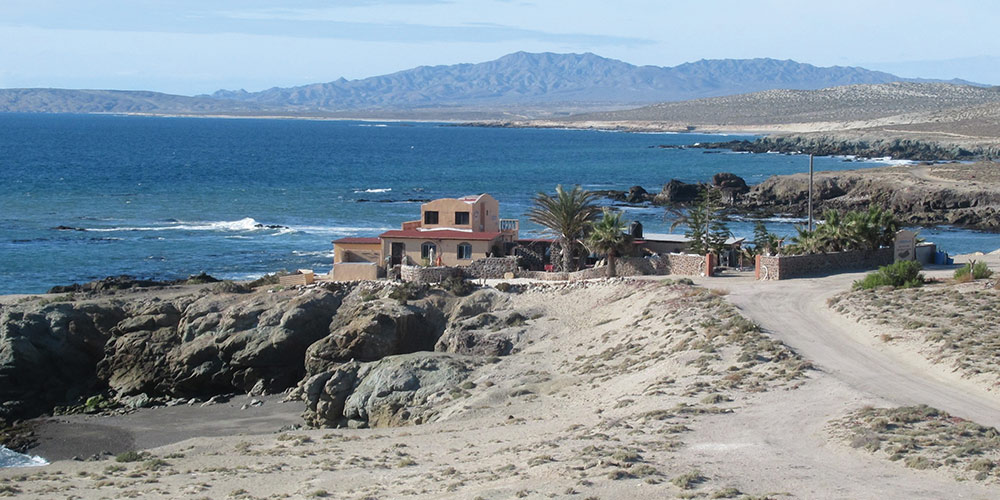
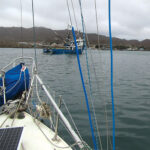
Cruisers sharing seafood seems part of the natural order and worth preserving. Nationalism and borders don’t seem to hinder, and even the commercial barriers can be trodden upon. On the Pacific coast of Baja, the locals don’t care what you fish, as long as it’s not lobster. That’s their bread and butter. Still, while drinking cerveza on a local fisherman’s porch in Bahía Tortugas, he snuck me a frozen lobster tail, completely unsolicited, urging me to quickly put it in my backpack and raising his finger to his lips in the universal sign for quiet. When names have long been forgotten or never even exchanged, the generosity and the elevated goodwill remain. I’m sure I’m not the only one having these experiences. Why does this happen? The connection between cruisers and seafood might be obvious: the sea. But before I ruin it with over-analyzing, and if I’ve piqued your intrigue, here’s a story worth sharing.
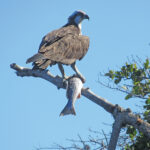
I was aboard my 1985 Pacific Seacraft Flicka 20, Sampaguita, anchored in Baie Tahauku, Hiva Oa, the Marquesas, in early May 2024. Given her diminutive size, shallow draft, and stern anchor, I was able to tuck up close to the shore next to the Vakanui, a traditional Marquesas double canoe. This kept us in the narrow legal anchoring zone in a small harbor overflowing with cruising yachts arriving from Mexico and Panama. The legal zone is designated such because boats there won’t interfere with large ships—like the fuel barge; or the D’Entrecasteaux-class patrol ship, Bougainville; and especially the largest, a hybrid freighter/cruise ship, the Aranui 5—coming to the wharf. Usually, their arrival is not a surprise. When they’re due, boats scatter from the anchorage. Some try to squeeze into the legal zone, while others are pushed outside the breakwater into the overflow anchorage with its relentless and unforgiving rolling.
Flying from Sampaguita’s starboard main shroud were the French and French Polynesia courtesy flags and, lower, off the starboard backstay, flew a US flag on top because that was where the boat was from. Just below that was an Irish flag because I had checked into French Polynesia as an Irish citizen. Technically, this last flag is not part of the etiquette, but it clarified the formality discrepancy in my mind. This citizenship check-in choice allowed me to stay longer without a visa and avoid the steep bond required of US citizens.
I was ashore at Marquesan Marine Services (MMS), the archipelago’s only boatyard. It’s a good outfielder’s throw from the cruisers’ dinghy dock and the boat ramp used by MMS to haul and launch boats. There are usually a few random cars parked around, as there is nothing so formal as a parking lot. MMS is also a cruising resource center and meeting place, and will share its internet if you give them a tip.

Right) The Marquesan Marine Service is a boat yard, internet provider, and a cruisers’ meet-up.
I was sitting barefoot at the picnic table on the covered patio partaking in this last offering when an excited Frenchman came up and asked if I wanted some fish. Absorbed in my tasks and mentally unprepared for his solicitation, I politely said, “No, thank you.” I can’t even recall if he asked first in French or English. It took less than a minute for me to come to my senses and realize, “Yes, I would love some fish.” But by then, he had moved on. No worries. Within a couple of minutes, another of his group came along and asked me the same thing. This time, I was ready.
I slipped my shoes on and trotted off after him through the boatyard toward the gate, where a dark-colored sedan was parked just outside. The boot was open, and three other animated Frenchmen were laughing and gesturing into it. I looked inside to see a whole tuna as big as the trunk. “Oui. Pardonnez-moi, mon Français est petit,” I say with a big smile. (Saying your French is small proves the point.) We all laughed while one grabbed a plastic bag, another cut into the fish, and the other two, in English, explained they bought it from the fishing boat tied up along the wharf. I had seen it over the past day or two. There was only one.
They had more than they needed or wanted and were clearly overjoyed. Before I knew it, I had a weighty and squishy plastic bag in my hand, and the tuna in the boot was now in two pieces, missing a six-inch segment in between.
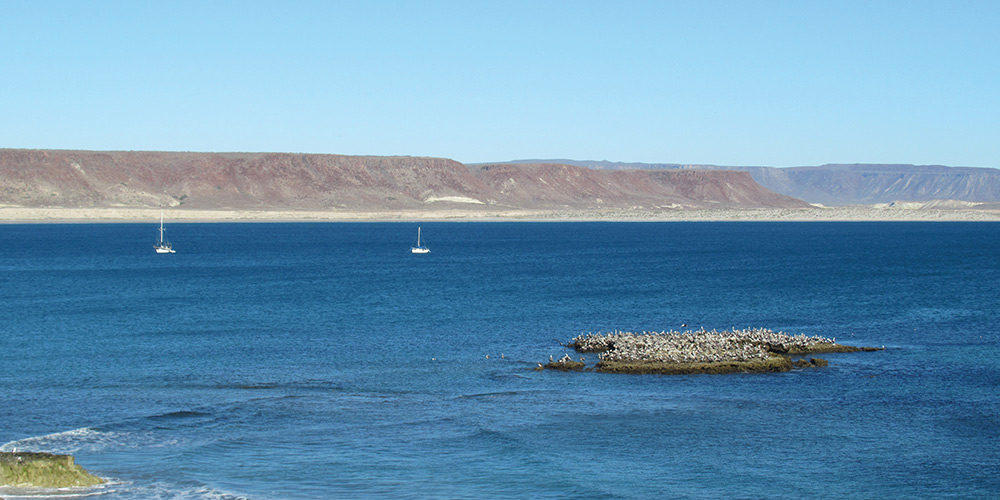
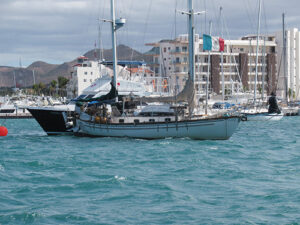
A bit taken aback by the stroke of luck and their generosity, I thought quickly on my feet. I wanted to reciprocate. I had seen this group of four Frenchmen on their boat earlier when tied to the local pier for cleaning, and I could see they had recently anchored in front of the wharf. I knew the Aranui 5 was scheduled to arrive in the morning, and they would be required to move. However, only a short time before, a neighbor of mine had left the harbor. I chimed in, “The Aranui 5 is due tomorrow. The last time it came was in the early morning. It is big. You won’t be able to stay where you are. The boat next to me recently left, and if that spot is still open, you should move there before someone else does.” I urged. ”You won’t have to move when the ship arrives. I’m the little Flicka 20, Sampaguita, stern tied in the back corner by the Polynesian boat. The one whose mast is oscillating twice as fast as everyone else’s. You can’t miss her.”
We parted ways about as abruptly as we came together, and I suddenly had too much fish on my hands. Sampaguita didn’t have a refrigerator, much less a freezer, and preservation was not an option in the tropical heat. I would have a fish dinner that evening, but I didn’t need one this big. I remembered two guys I had shared a table with down on the wharf. On the weekend evenings, there was a food truck in the port, though calling it a food truck is a bit of an understatement. You ordered and paid for it through a pleasant Polynesian woman named Hinano. (Named after the flower, not the beer.) But the kitchen was outside, boxed in behind the truck and a curiously high wooden barricade. Seating was family style at folding tables with flowery cloths, so singlehanders never sat alone, and your order was brought out to you by local teenagers. The food was delicious, and the servings were enough for two meals.
The two guys were on a boat hauled out at MMS. The owner was from Florida, and his friend from Australia had recently arrived with a replacement seal for the saildrive. With the squishy bag of fish, I called up the ladder and was invited to climb aboard for a happy hour well underway. I offered the fish, and it was cut into thirds; two for them and one for me, given back in the same squishy but lighter bag while we product-tested some rum and cokes and talked sea tales. After a bit, satisfied to have paid my excess forward, I sauntered to the dock and rowed the dinghy back to Sampaguita. On arrival, I was happy to see the four Frenchmen had seized the adjacent anchoring opportunity I had mentioned. With the evening quickly winding down, I kept dinner simple. I sauteed some onions in herbs and butter, added the still-huge tuna steak and a few squeezes of lime, and settled into a quiet and sweltering evening on the boat.
Anticlimactic? But wait. It’s not over.
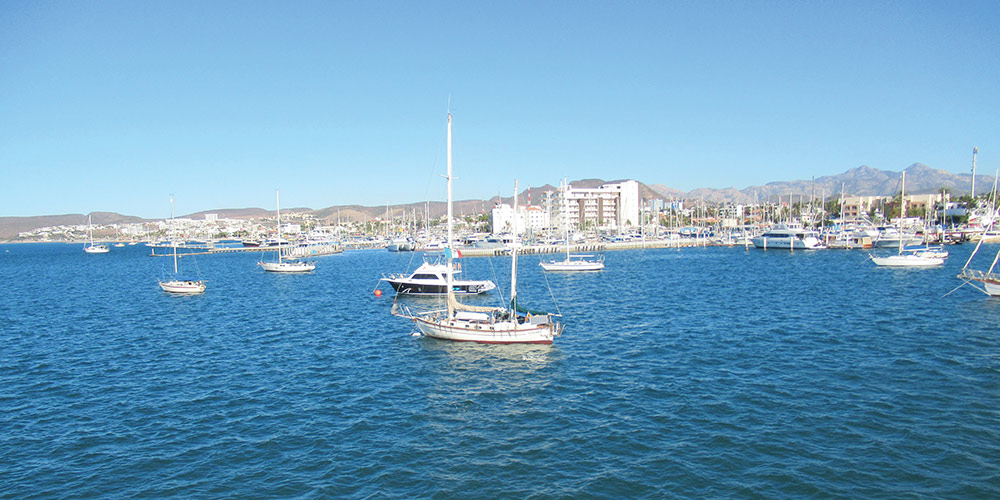
I awoke in the morning to a bit of hustle and bustle in the anchorage, in addition to rising temperatures and wild crowing roosters. Stepping on deck, I could see the bridge of the Aranui 5 peeking over the breakwater as she lay off the harbor, waiting to enter. She was periodically sounding her horn, an urgent monotone, giving notice to those cruisers illegally anchored. The game of musical anchors had begun. Boats were hauling up tackle with a little laughing but more yelling. Some accepted their fate in the rolly outside anchorage. Others were determined to enter the legal zone only to be rebuffed by the boat they inevitably moored too close to. (Adding a stern anchor should be the norm, but it’s not.) Fenders were slung over gunwales to ward off advances while owners discussed the intricacies of anchoring etiquette in whatever language they could both understand. One American-flagged catamaran with a family of four seemed to be having mechanical issues, whether the windlass, engine, or both. Being the last boat, the Aranui 5’s horn was becoming more frequent with demand and impatience, while a couple of cruisers mounted their dinghies to help move the cat. Next came the Aranui 5’s impressive entrance. Her tenders, bigger than Sampaguita, were launched, and her warping lines were uncoiled as they finessed the large ship sideways into the tiny harbor and eased her alongside the wharf.
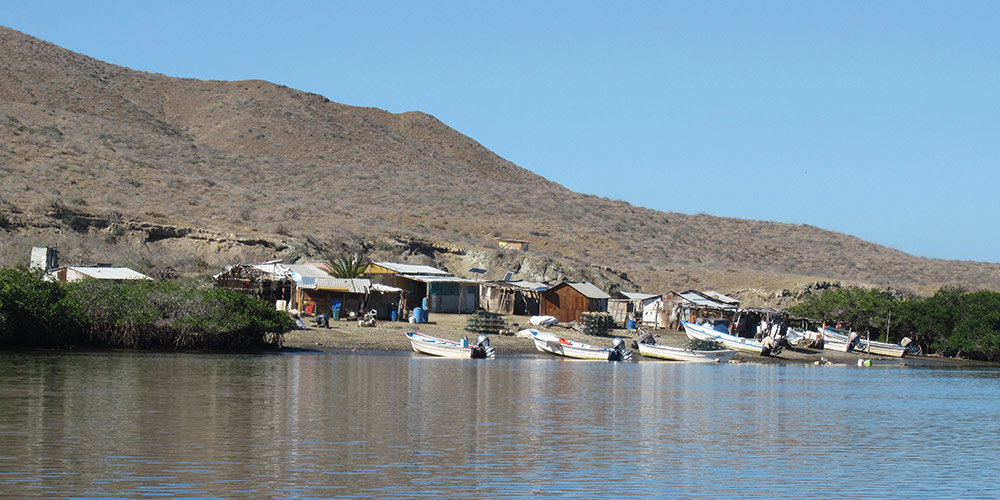
A few moments after I stepped on deck, while the anchoring maelstrom was in full swing, music began emanating from the four Frenchmen’s boat. Quite loud. I mean, not so loud that I was bothered by it, but loud enough to hear it well. I thought to myself, “Those guys like to party.” After a bit, I identified the song as ‘The Irish Rover.’ Then it dawned on me, based on the volume and their body language, they were playing it for me! It was a salute for tipping them off to the anchoring spot the night before, saving them from participating in the unfolding mayhem. The Frenchmen clearly found the whole spectacle amusing. It’s easy to be amused when securely anchored out of the way. We waved to each other in recognition and appreciation. When the song finished, they gestured me over and gave me a bowl of fresh tuna salad as a parting gift. Within a few hours, they had weighed anchor and were gone.
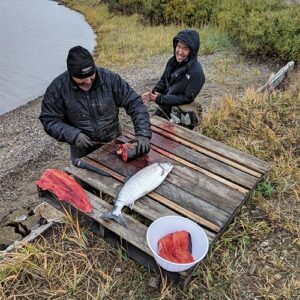
Food might be the best gift you can give. If not the best, the most practical. Shrimp in Canada. Salmon in Alaska. Tuna in the Marquesas. And too many to count in Mexico. I have a working theory. The generosity is about its free abundance. No cruiser has ever gifted me a Black Angus T-bone steak. But a nice pelagic fish is another story. Is your freezer overflowing with tuna? Give it away. Shot two fish with one spear? Give it away. Are your shrimp pots bulging? You guessed it. Give it away. Sure, it required some gear and licenses, but these were tools for recreation, and the ship’s larder can only be so full. And when the fishing is good, it can be really good. It’s cruiser-conditioning to share rather than be wasteful. The Frenchmen bought their tuna and knew they had more than they would (or wanted to) eat or store. They expected no payment but received dividends for their generosity when I shared advantageous local knowledge. I was happy to bring the goodwill full circle.
The abundance of the sea allows cruisers to be generous, to have others over for dinner, and to empty the freezer without challenging the cruising kitty. Most cruisers are pretty protective of their budgets, expect to look after themselves, and crew from each boat tend to orbit around each other. If a group of cruisers goes to dinner, each boat pays its own. Being insular is easy and safe. Everything takes so much time and focus. Seafood offers an ice breaker to lift the veil and stretch out—a free and easy way to connect with fellow cruisers and remember that we are cruising in search of extraordinary moments. A lot of joy gets spread through the generosity of seafood. I hope it continues.
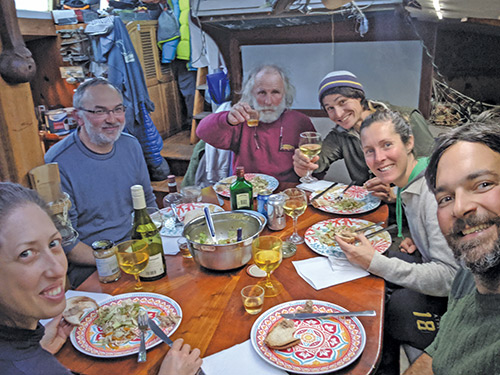
Joshua Wheeler has lived and sailed on small craft for over 15 years and 25,000 nautical miles. Credits include a 2019 transit of the Northwest Passage aboard Breskell, two solo circumnavigations of Vancouver Island in 2018 and 2023, the Inside Passage to Alaska in 2022, and a Pacific tour in 2023-24. He holds a USCG 100-Ton Inland Master’s license and 25-Ton Near Coastal, has a recurring column in ‘Lectronic Latitude and Small Craft Advisor’ called The Resourceful Sailor Series, and enjoys local small boat racing with the Port Townsend Sailing Association.
Josh Wheeler
Josh Wheeler is an avid writer and sailor who lives aboard on his 20-foot Flicka sailboat. Follow his adventures at sailingwithjosh.com
